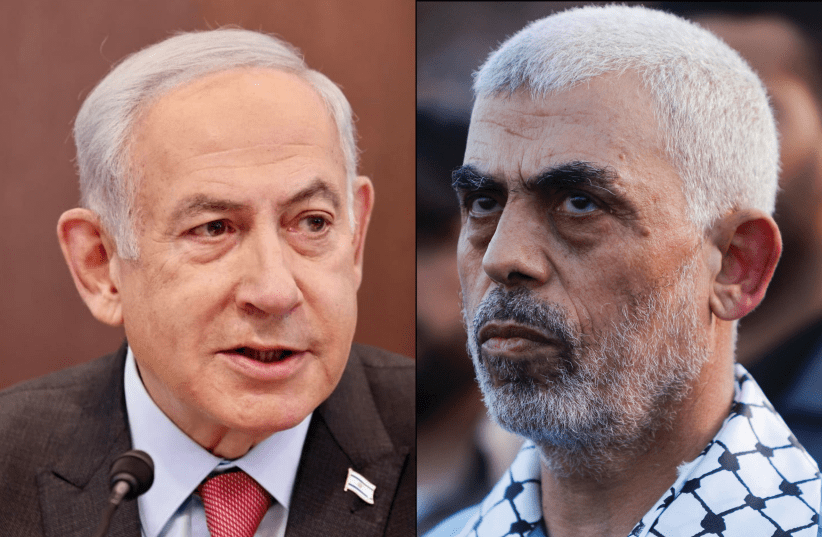The fragile ceasefire between Israel and Hamas is facing a critical test, as mounting tensions and political maneuvering threaten to derail the truce.
In a move that has raised alarms, Israel’s security cabinet has backed former U.S. President Donald Trump’s demand for the immediate return of all remaining hostages held by Hamas.
This development, coupled with Prime Minister Benjamin Netanyahu’s order for Israeli troops to amass in and around Gaza, has reignited fears of a return to full-scale conflict.
While Hamas has insisted that it remains committed to the ceasefire deal, its decision to delay the release of additional hostages has escalated the standoff.
With both sides trading accusations and external pressures mounting, several key factors could contribute to the breakdown of the ceasefire and the resumption of hostilities.
Hostage Releases at the Center of the Standoff
The issue of hostages remains the most immediate and contentious point of conflict. Hamas recently announced that it was postponing the scheduled release of hostages “until further notice,” without providing a clear reason.
This decision has infuriated Israeli leaders, who have signaled that military action could be an option if the situation is not resolved quickly.
Netanyahu, while stopping short of specifying whether he was demanding the release of all 76 remaining hostages or just the three due to be freed on Saturday, made it clear that Israel would not tolerate delays. “The hostages must be returned now,” a senior Israeli official stated, reinforcing the country’s stance.
For Israel, the release of hostages is non-negotiable, and any perceived hesitation from Hamas could be interpreted as a violation of the ceasefire.
This raises the stakes considerably, as military mobilization has historically been a precursor to escalation in the region.
Israeli Troop Mobilization: A Preemptive Move or a Step Toward War?
Netanyahu’s order to move Israeli forces closer to Gaza has been interpreted as both a warning and a strategic positioning for possible military intervention.
The buildup of troops and military assets near the Gaza border sends a strong signal to Hamas that Israel is prepared to act forcefully if hostage releases are not resumed.
Military analysts argue that while Israel may not immediately launch a full-scale operation, the presence of its forces increases the likelihood of accidental clashes or preemptive strikes, both of which could shatter the ceasefire agreement.
The move also puts additional pressure on Hamas, forcing the group to either comply with Israel’s demands or risk a military confrontation.
Trump’s Influence and U.S. Pressure on Israel
The renewed push for hostage releases comes amid former U.S. President Donald Trump’s vocal support for Israel’s demand.
Trump has been clear in his stance that all hostages must be released, and his influence within Israeli political circles has added another layer of complexity to the crisis.
Trump’s position aligns with Netanyahu’s hardline approach, potentially emboldening Israel to take more aggressive actions if Hamas does not cooperate. However, such a stance risks alienating key Arab allies and undermining diplomatic efforts aimed at sustaining the ceasefire.
Hamas Under Pressure from Arab Nations
While Hamas has blamed Israel for the current impasse, reports indicate that several Arab nations, including Egypt and Qatar, are pressuring the group to resume the hostage releases.
These countries have played a crucial role in brokering past truces and prisoner exchanges, and their involvement could be a deciding factor in whether the ceasefire holds.
If Hamas resists this diplomatic push, it risks further isolating itself regionally and giving Israel justification for a military response. On the other hand, if Hamas concedes too easily, it may face backlash from its own ranks and hardline factions that see any compromise as a sign of weakness.
Jordan’s Strong Opposition to a Gaza Takeover
Amid the growing uncertainty, Jordan’s King Abdullah has reiterated his opposition to Trump’s proposal for a Gaza takeover, a plan that many in the region see as an attempt to displace Palestinians.
Jordan has long been a key player in Middle East diplomacy, and its stance adds another layer of tension to the situation.
King Abdullah’s rejection of the plan signals a broader resistance among Arab nations to any Israeli move that could be perceived as an attempt to reshape Gaza’s political landscape.
If Israel pushes forward with any steps resembling a takeover, it could face not just Hamas, but also broader regional opposition, further escalating tensions.
The Fragility of the Ceasefire and the Road Ahead
As the situation stands, the Gaza ceasefire is at a dangerous crossroads.
The combination of stalled hostage negotiations, Israeli military preparations, U.S. political pressure, and regional diplomatic maneuvers makes it increasingly difficult to maintain the truce.
For the ceasefire to hold, swift diplomatic action will be necessary. International mediators, particularly Arab states, must find a way to bridge the growing gap between Israel and Hamas.
At the same time, both sides must exercise restraint to prevent an escalation that could plunge the region back into war.
The coming days will be critical in determining whether peace efforts can be salvaged or if the ceasefire will collapse under the weight of political and military pressures.
If hostilities resume, it could set off another devastating cycle of violence with severe humanitarian consequences for civilians in Gaza and beyond.

